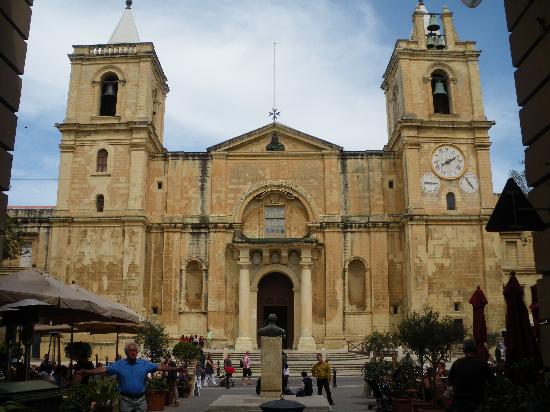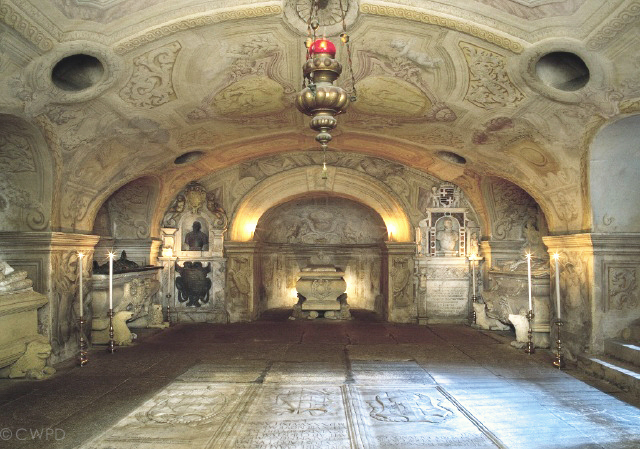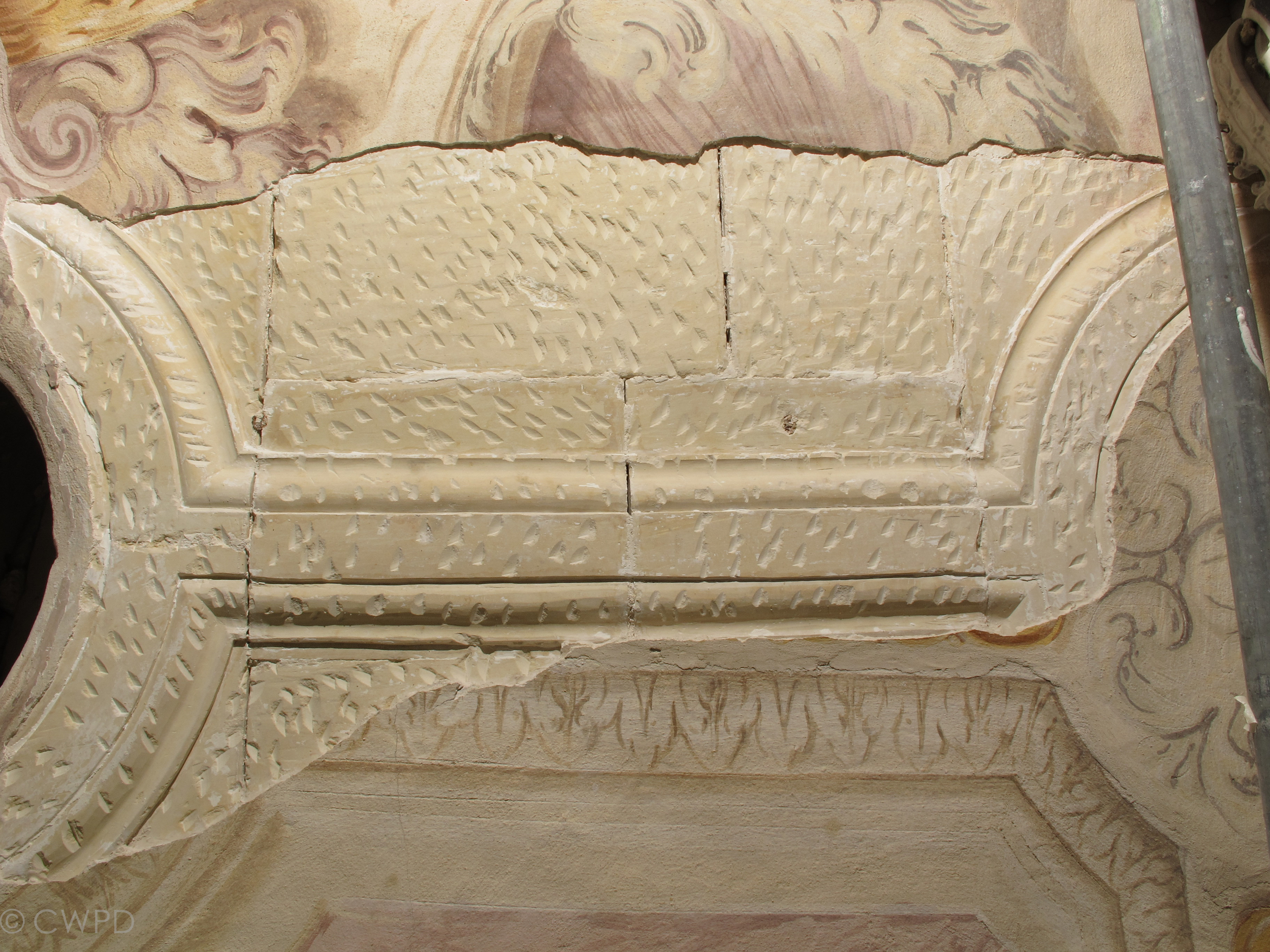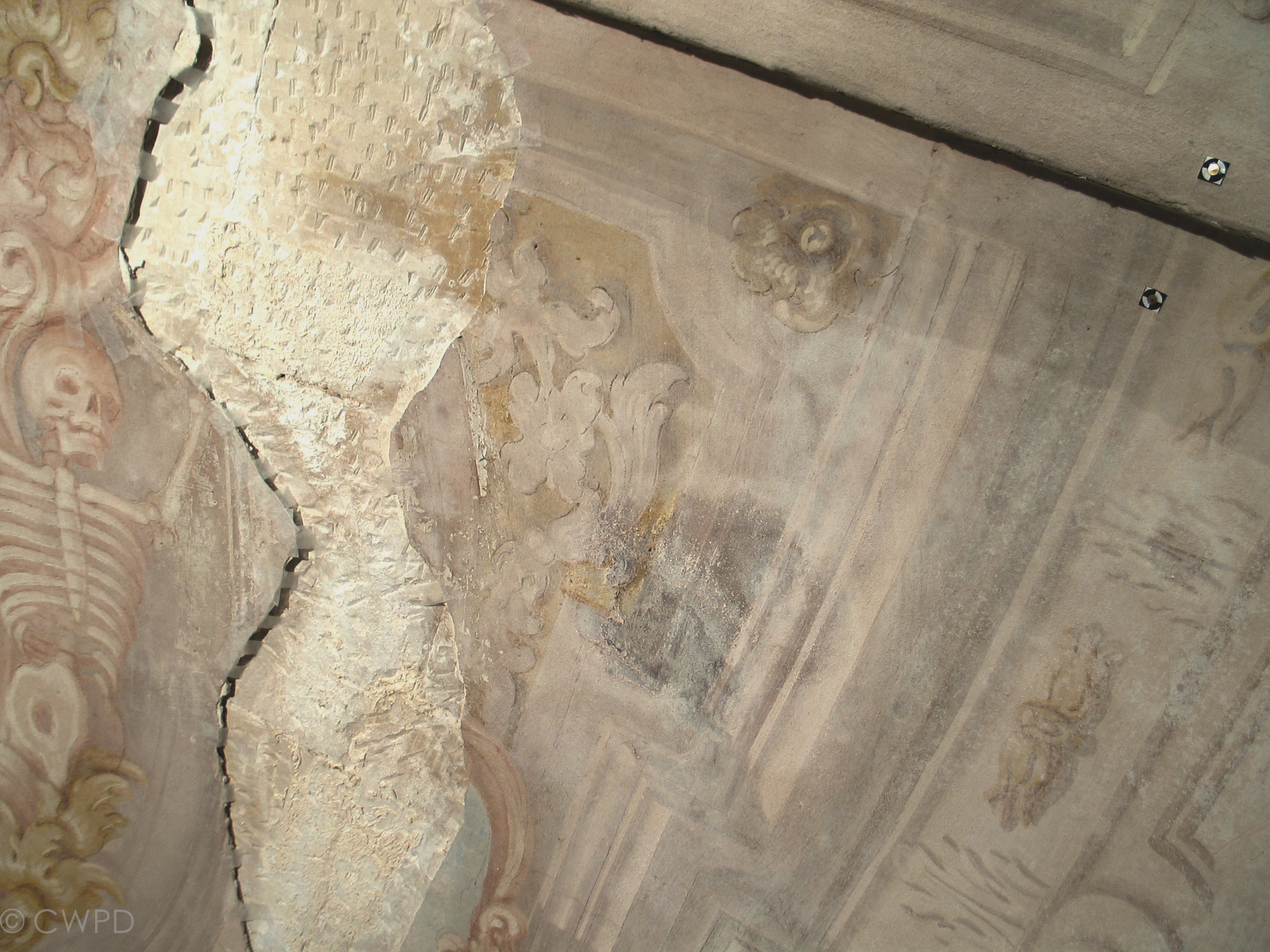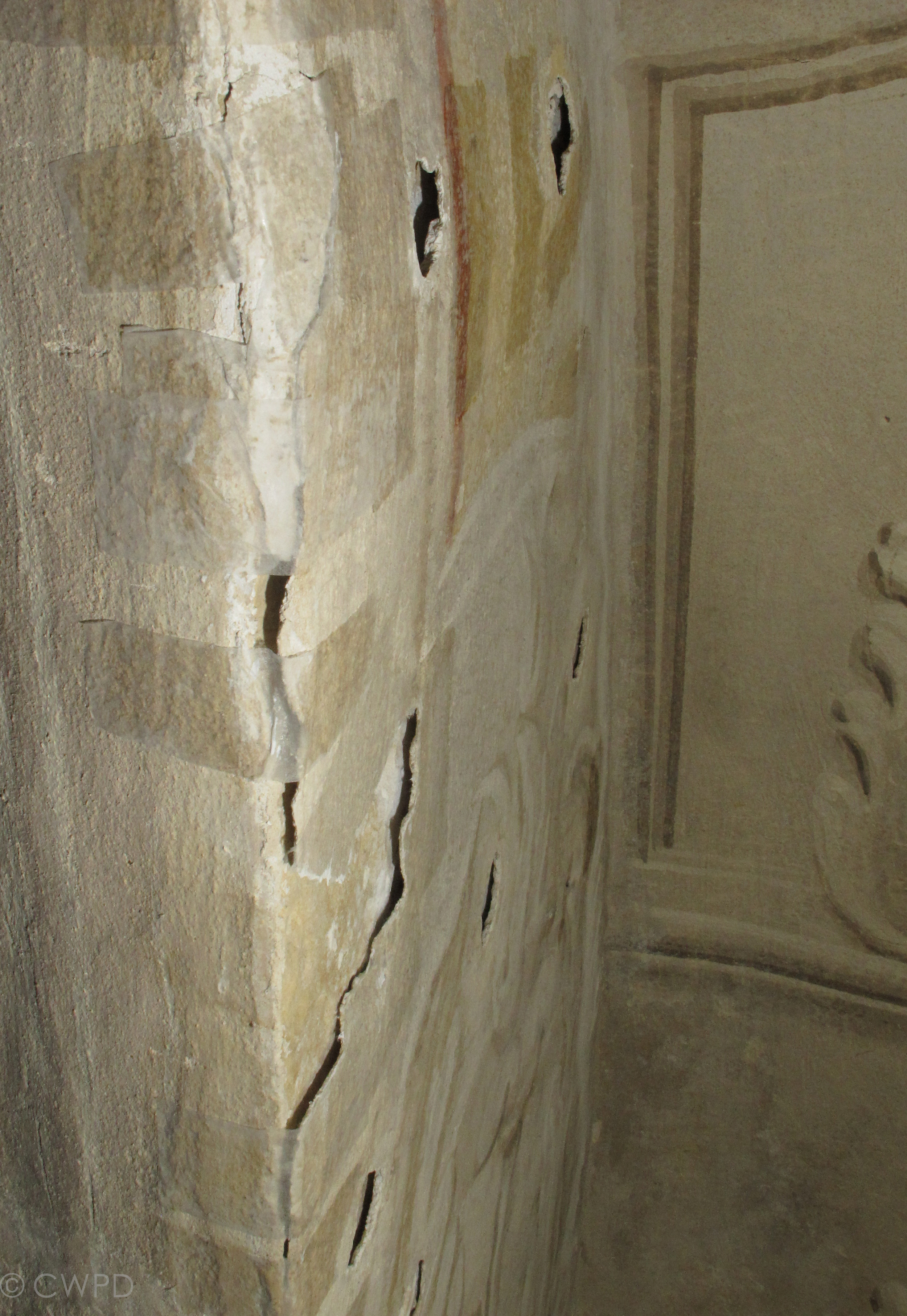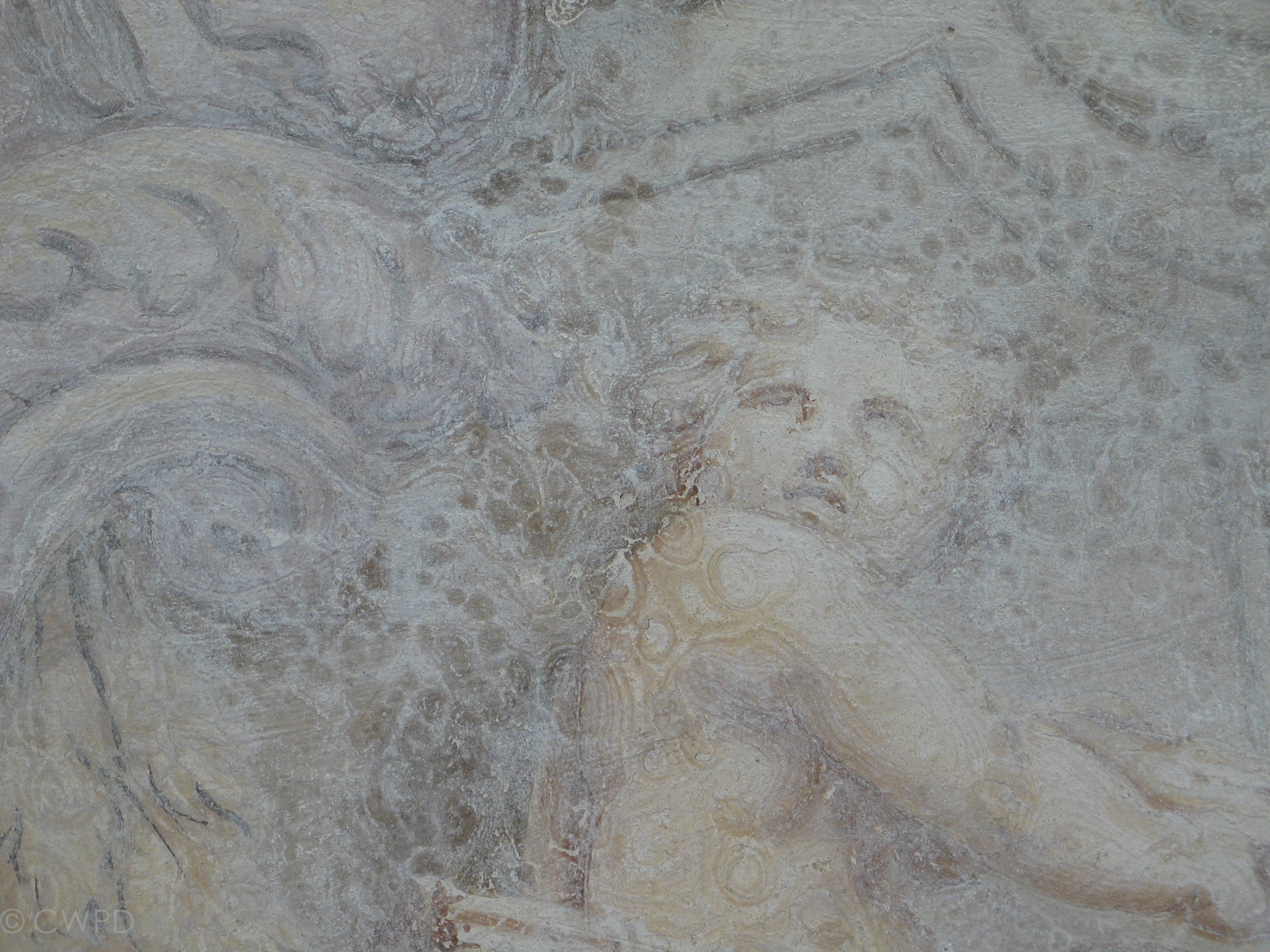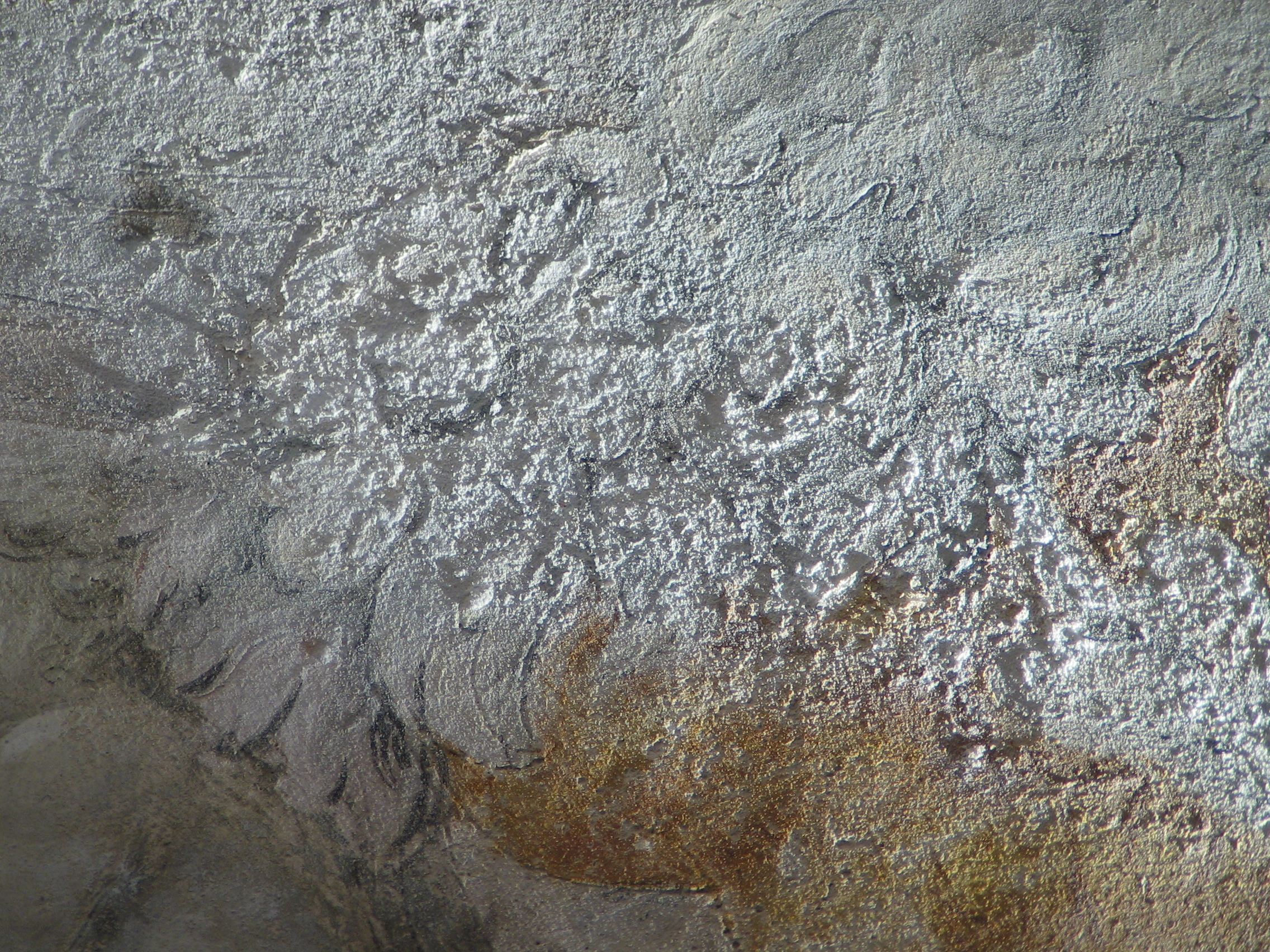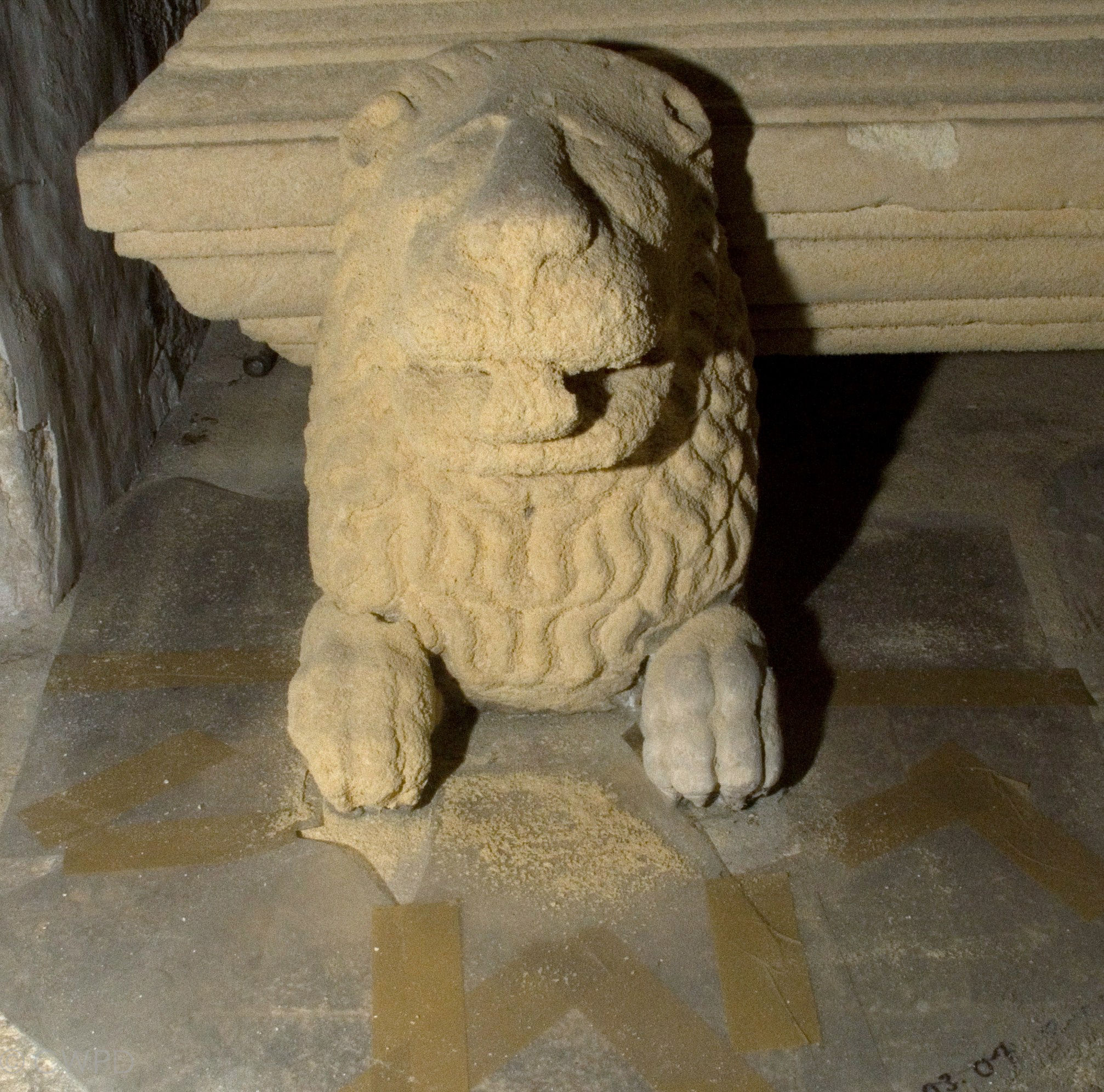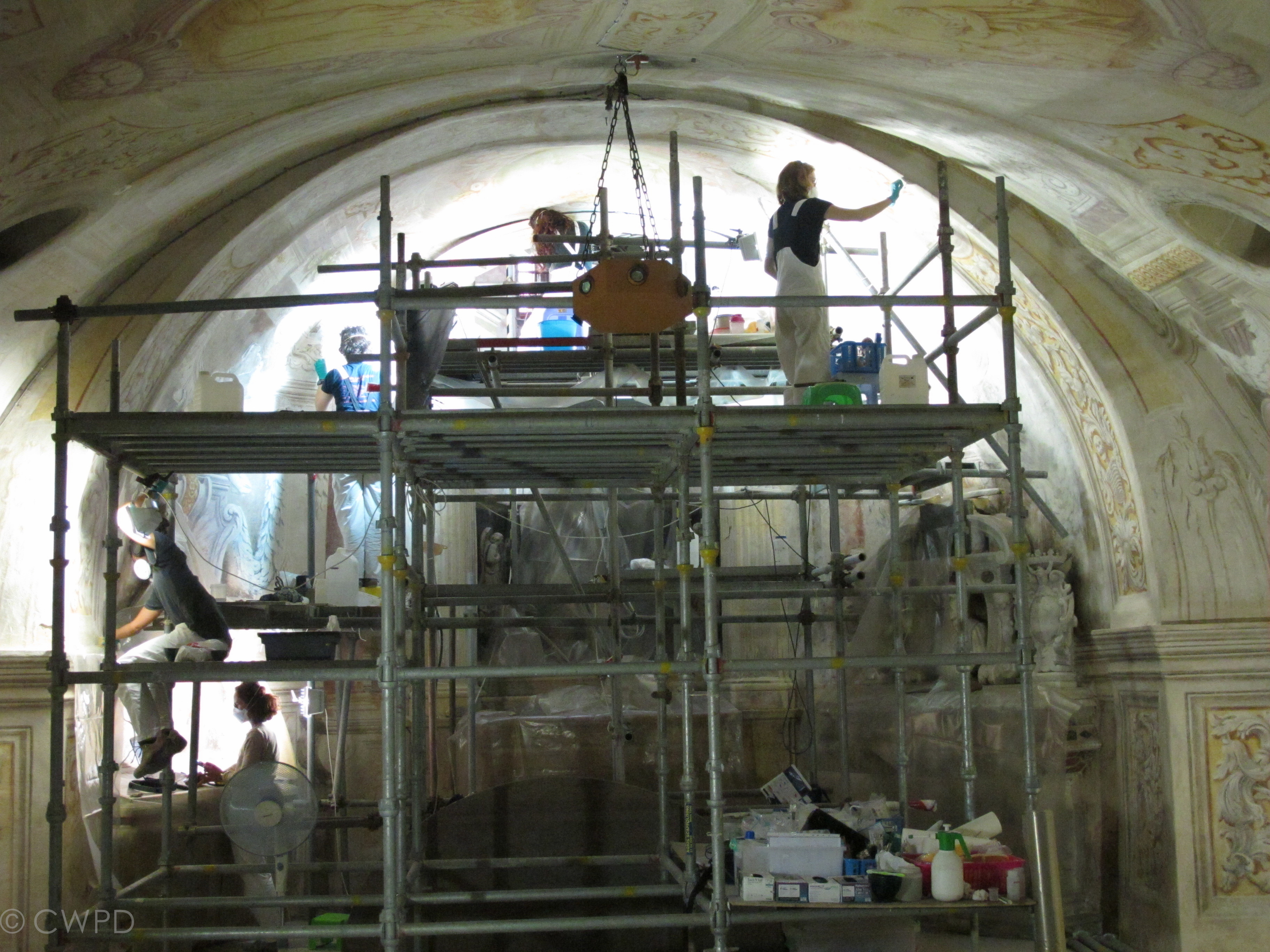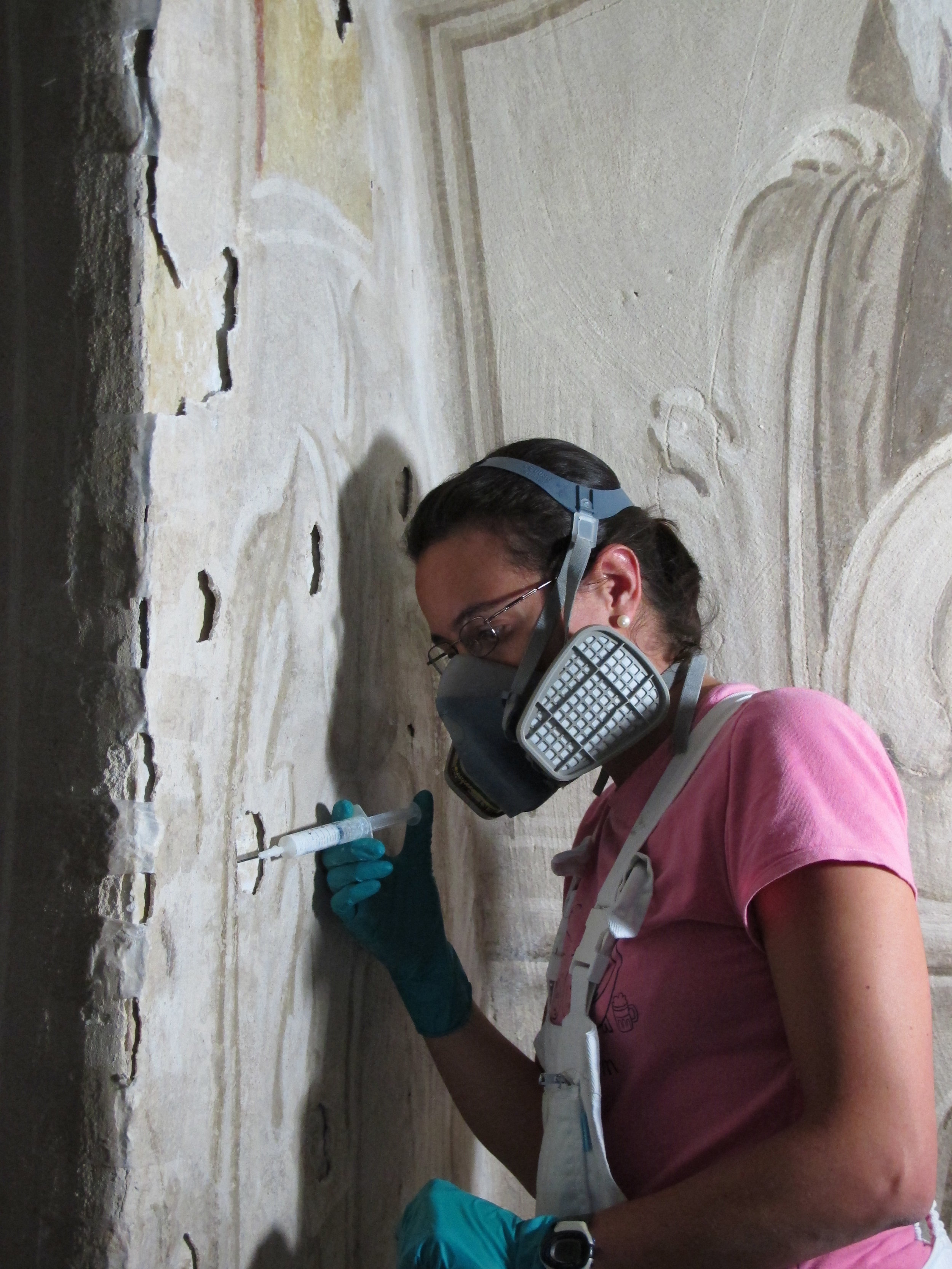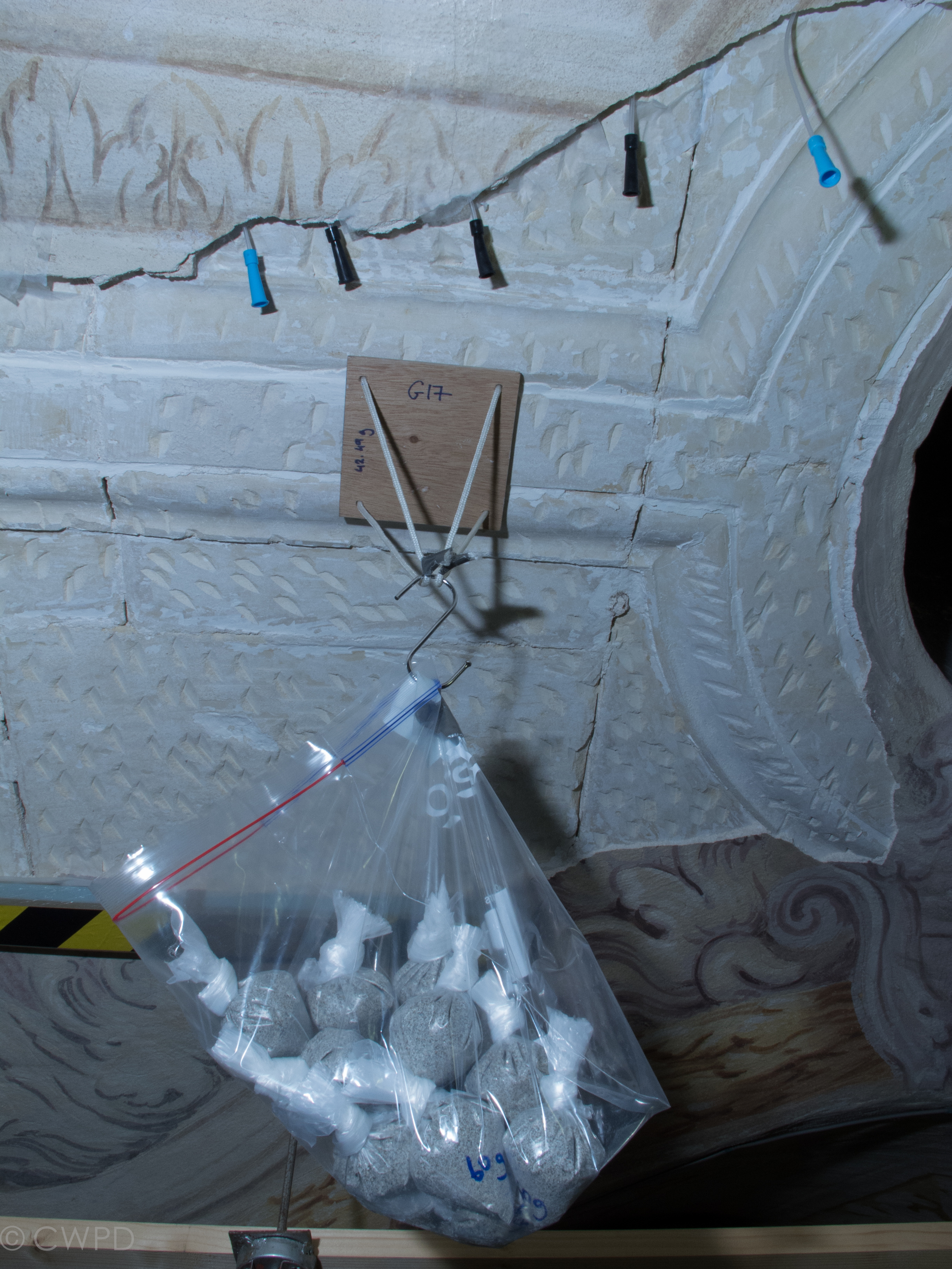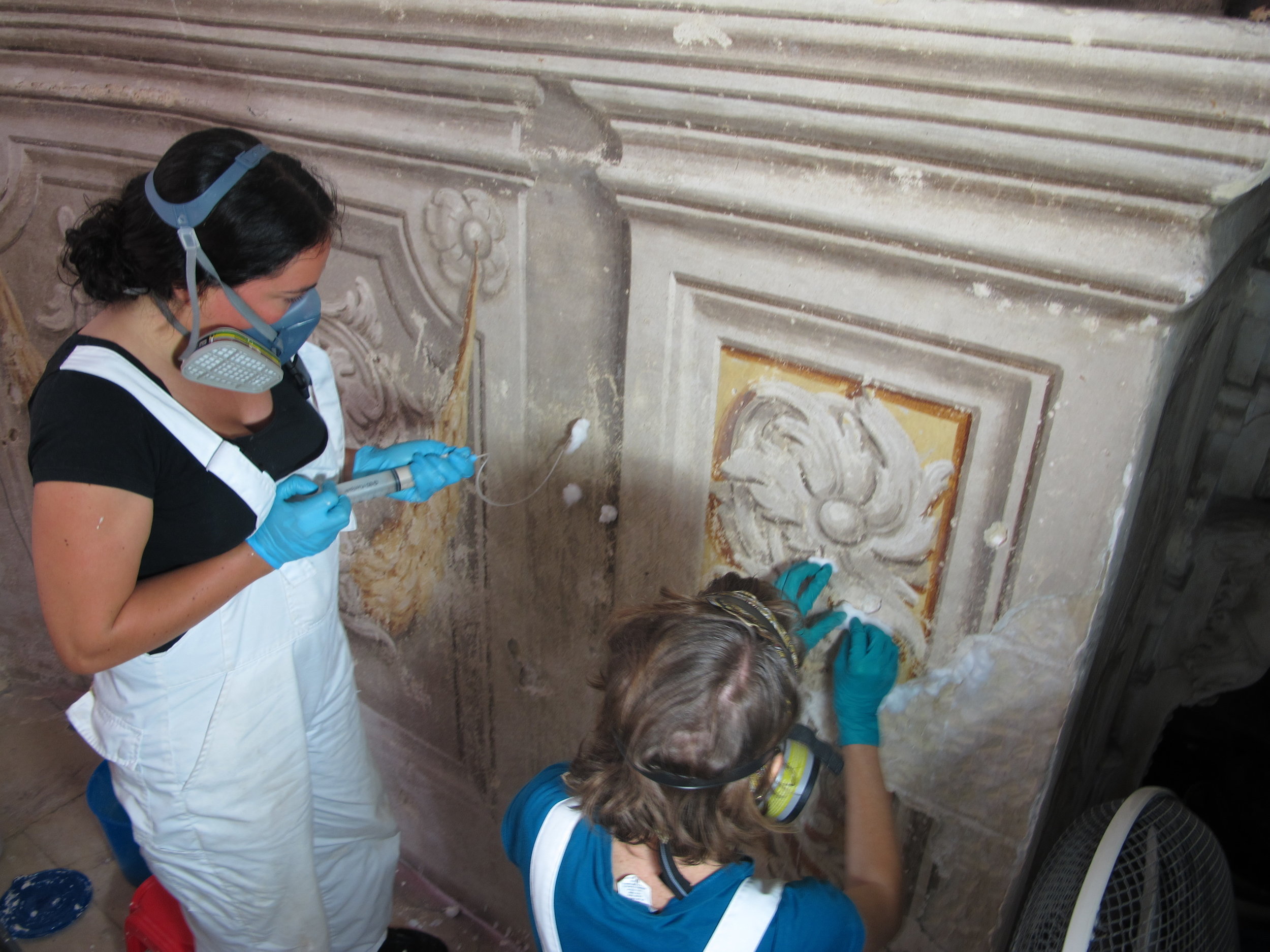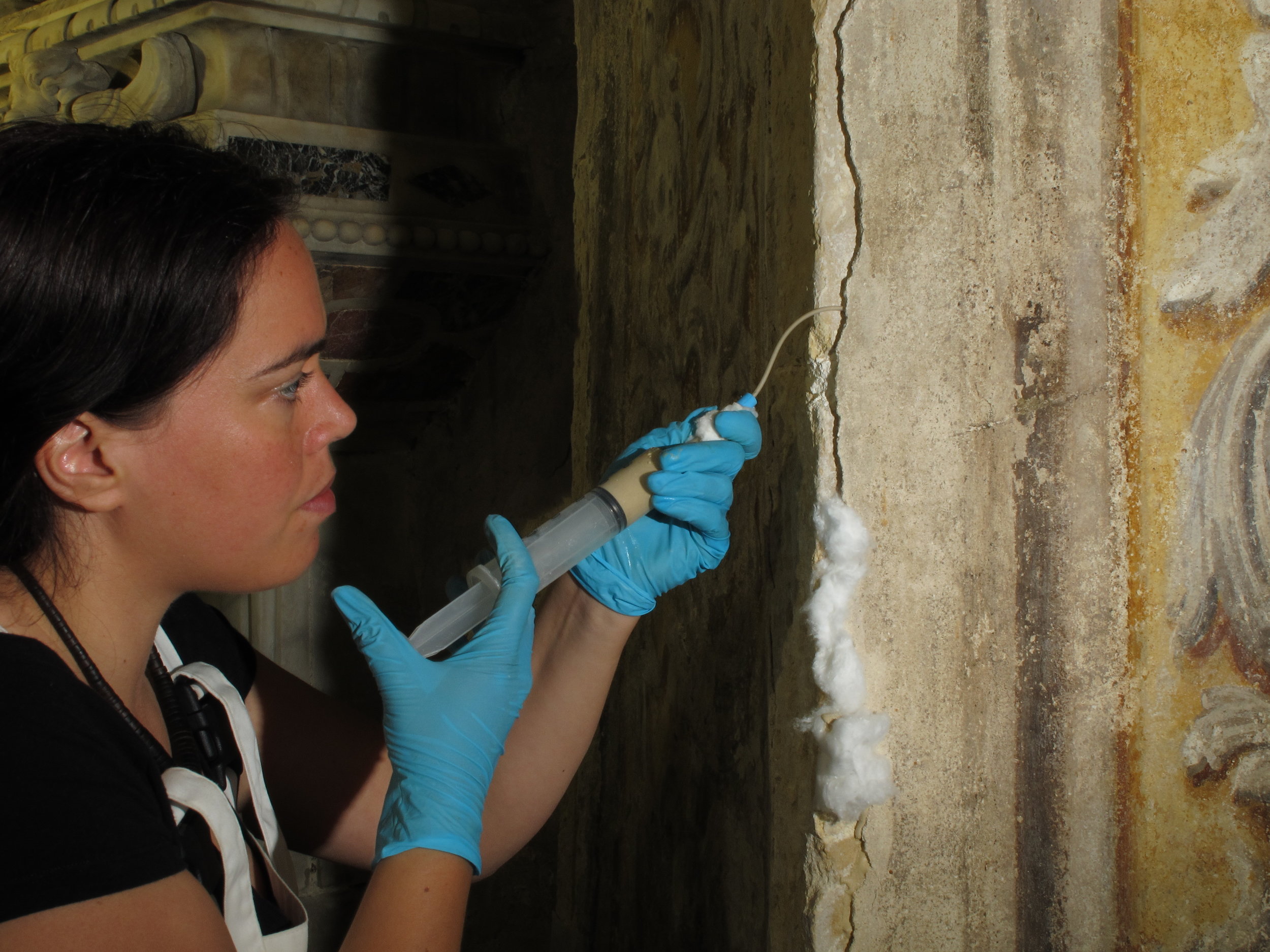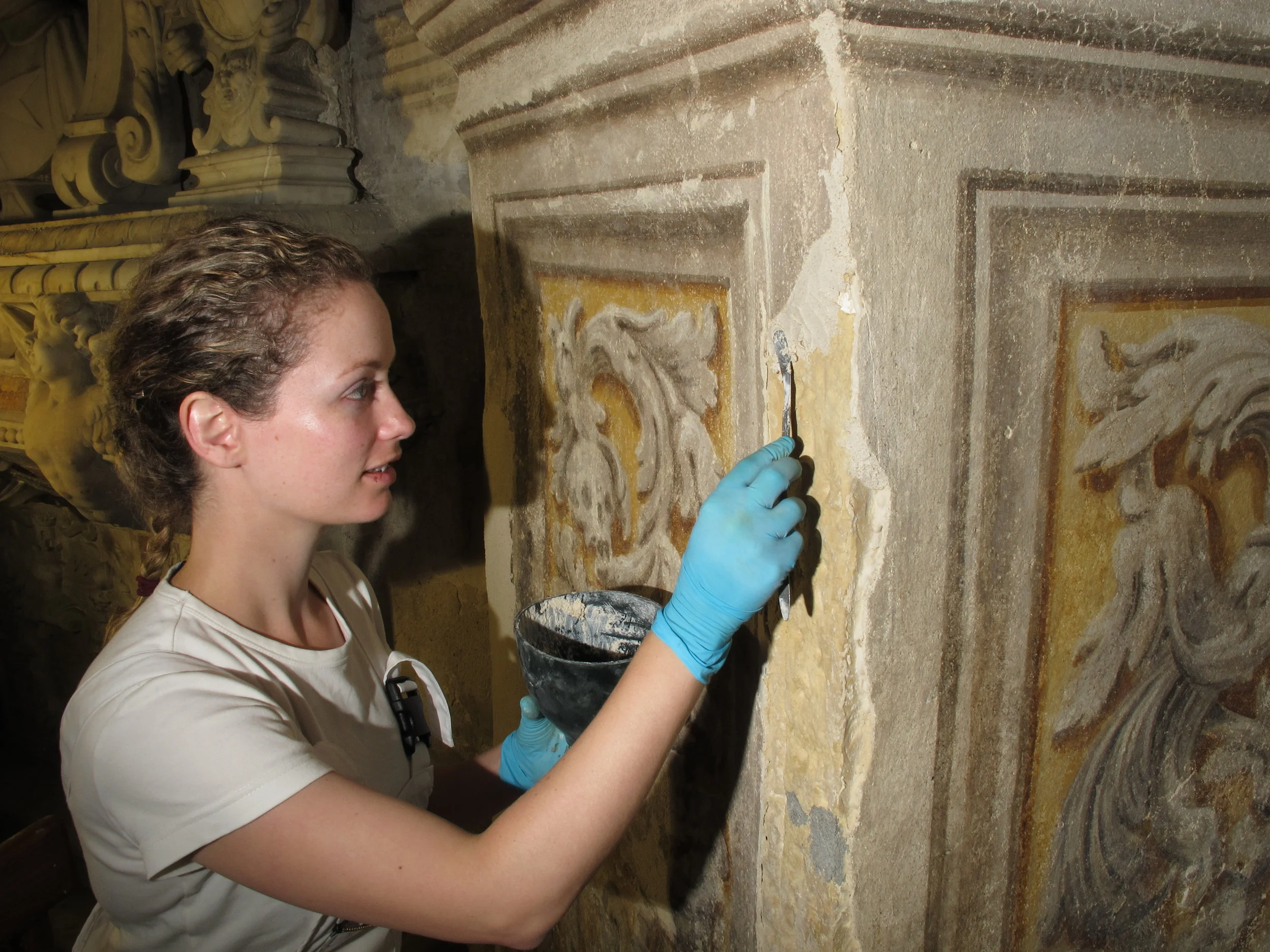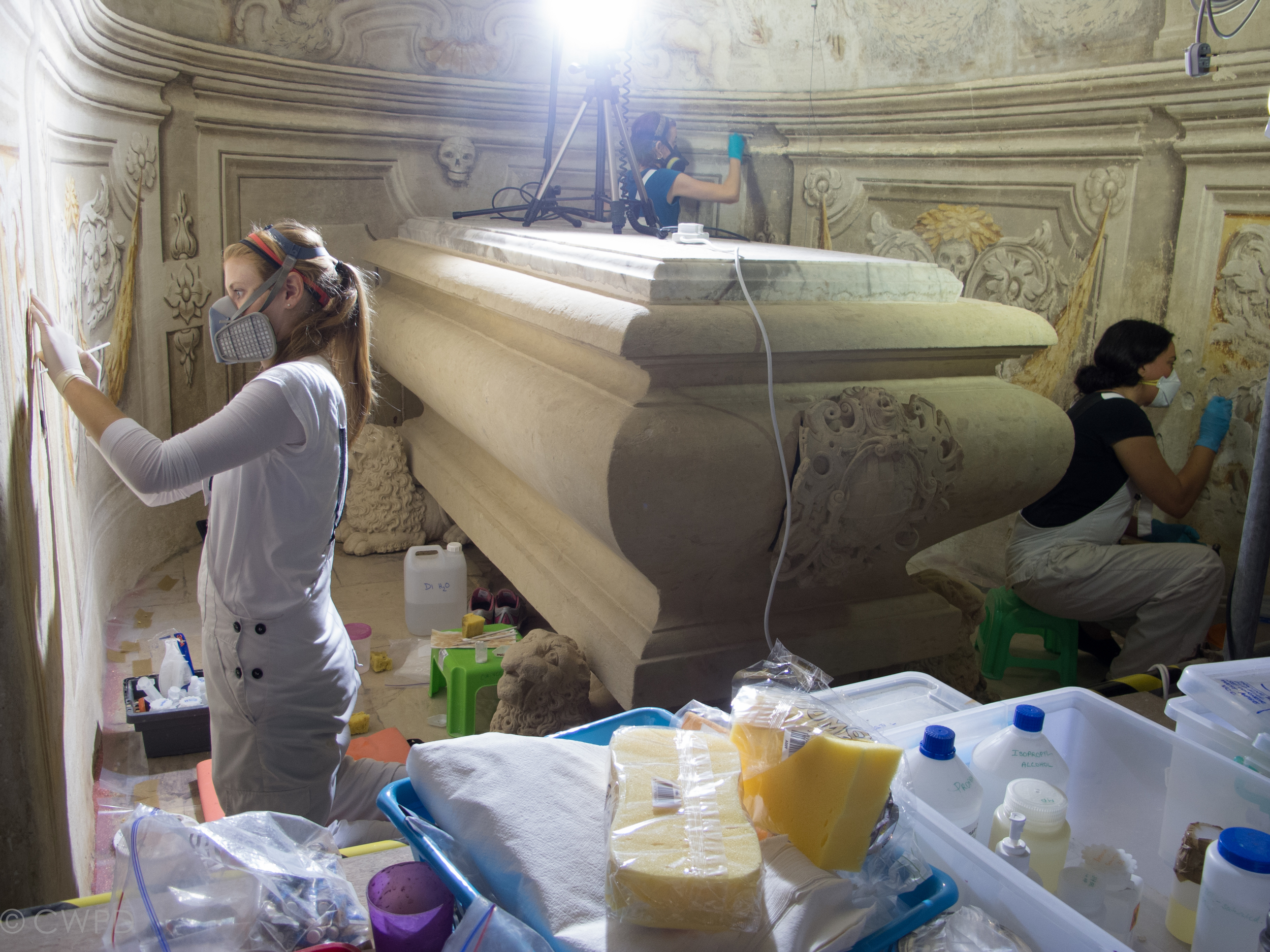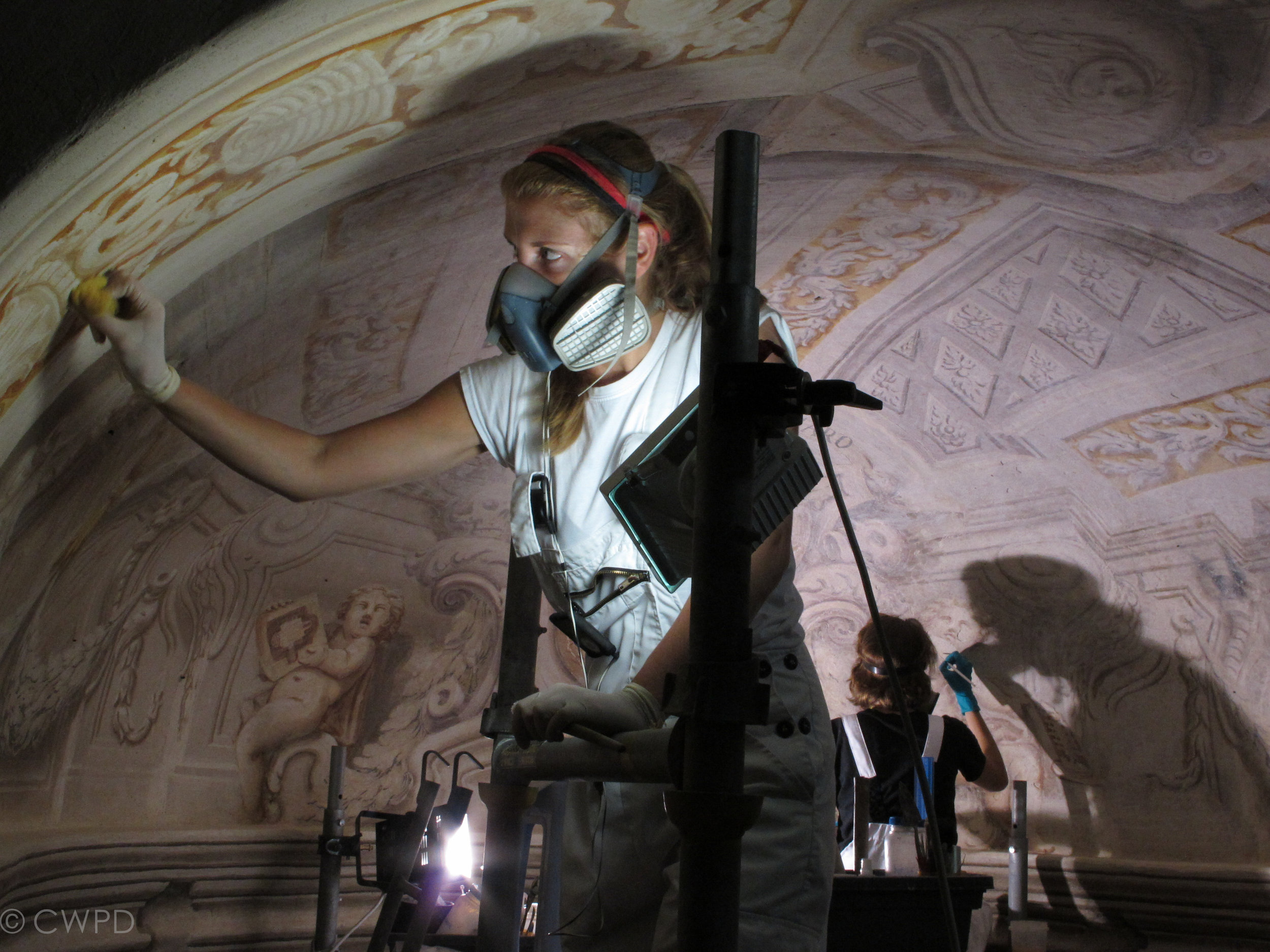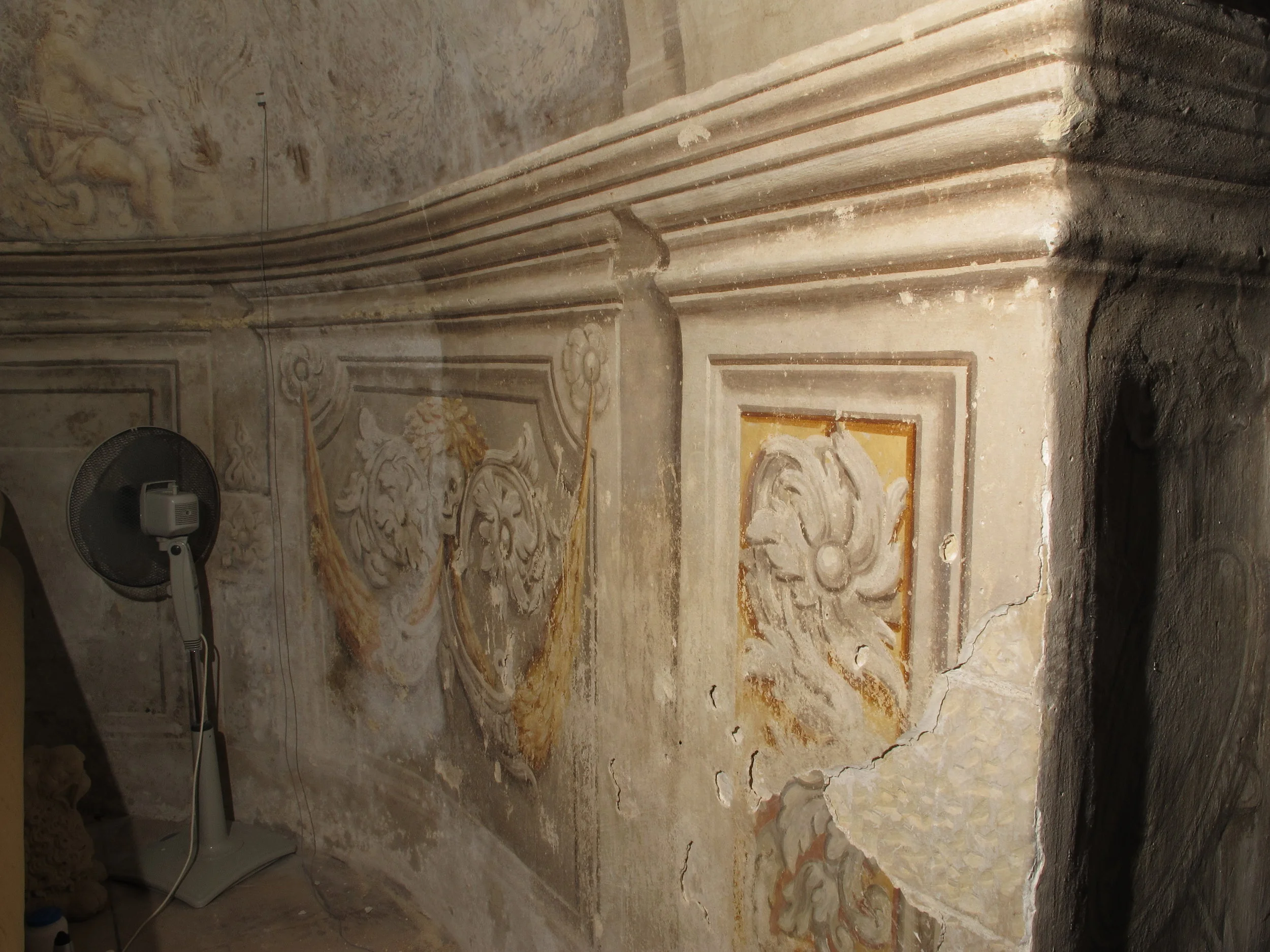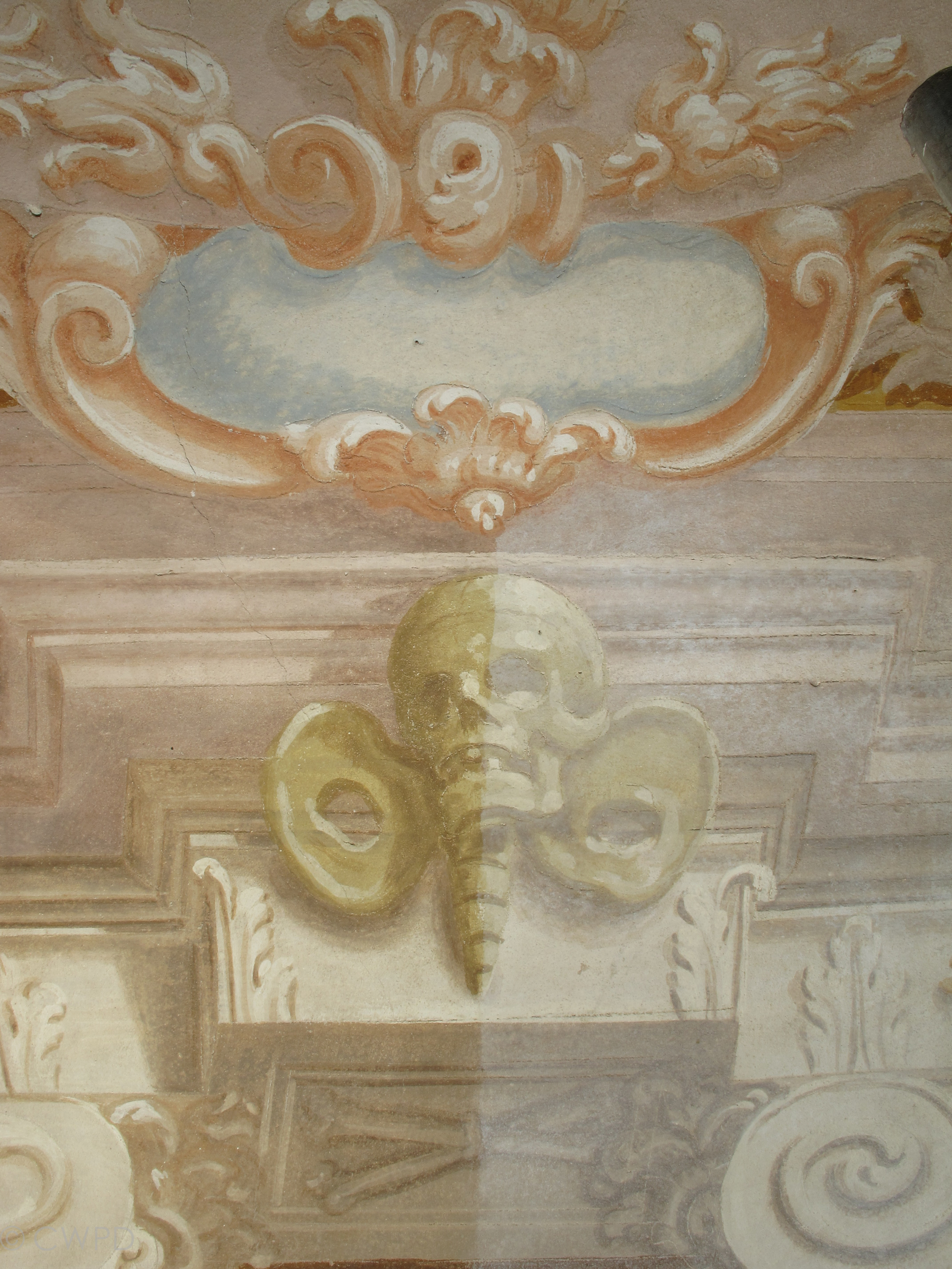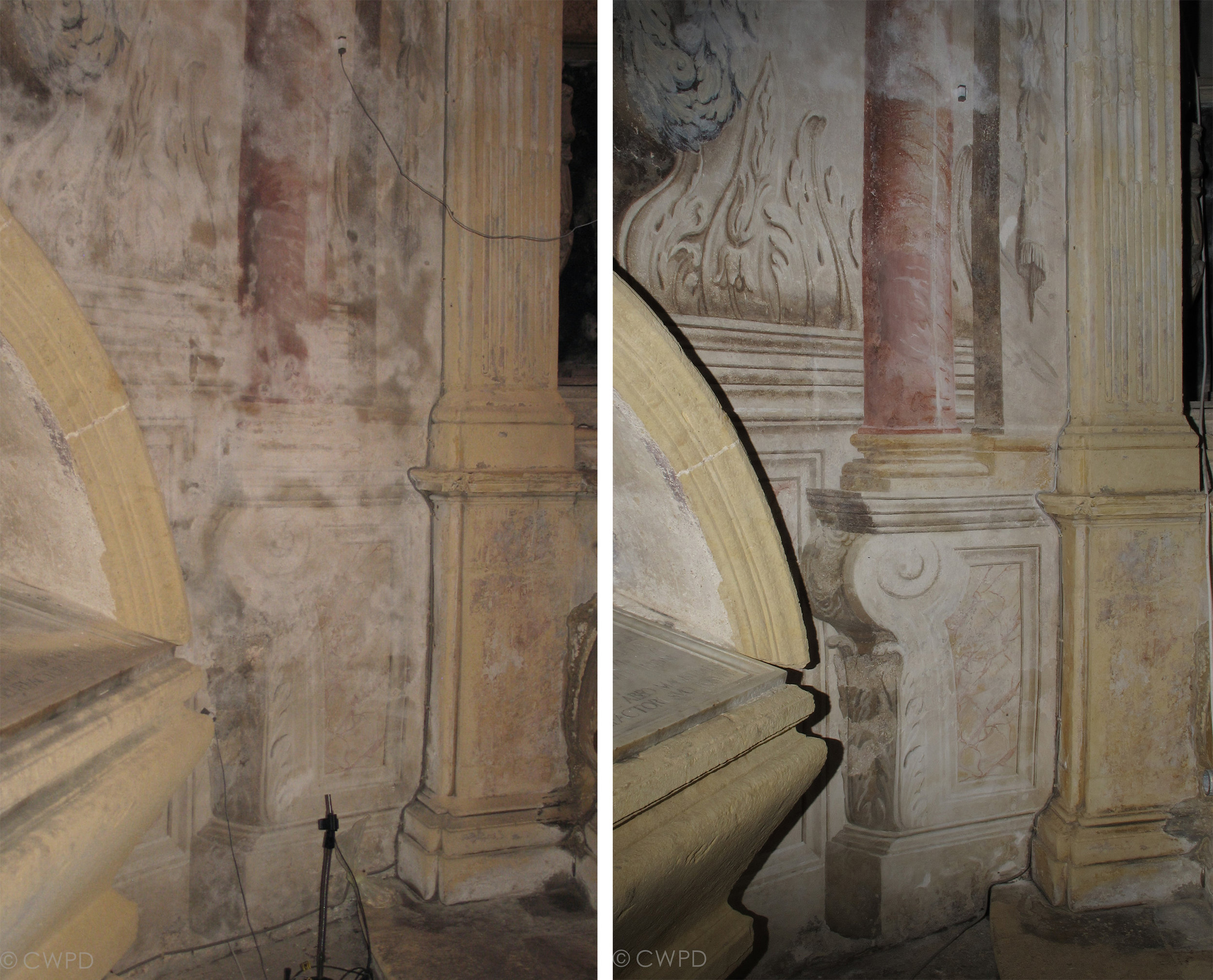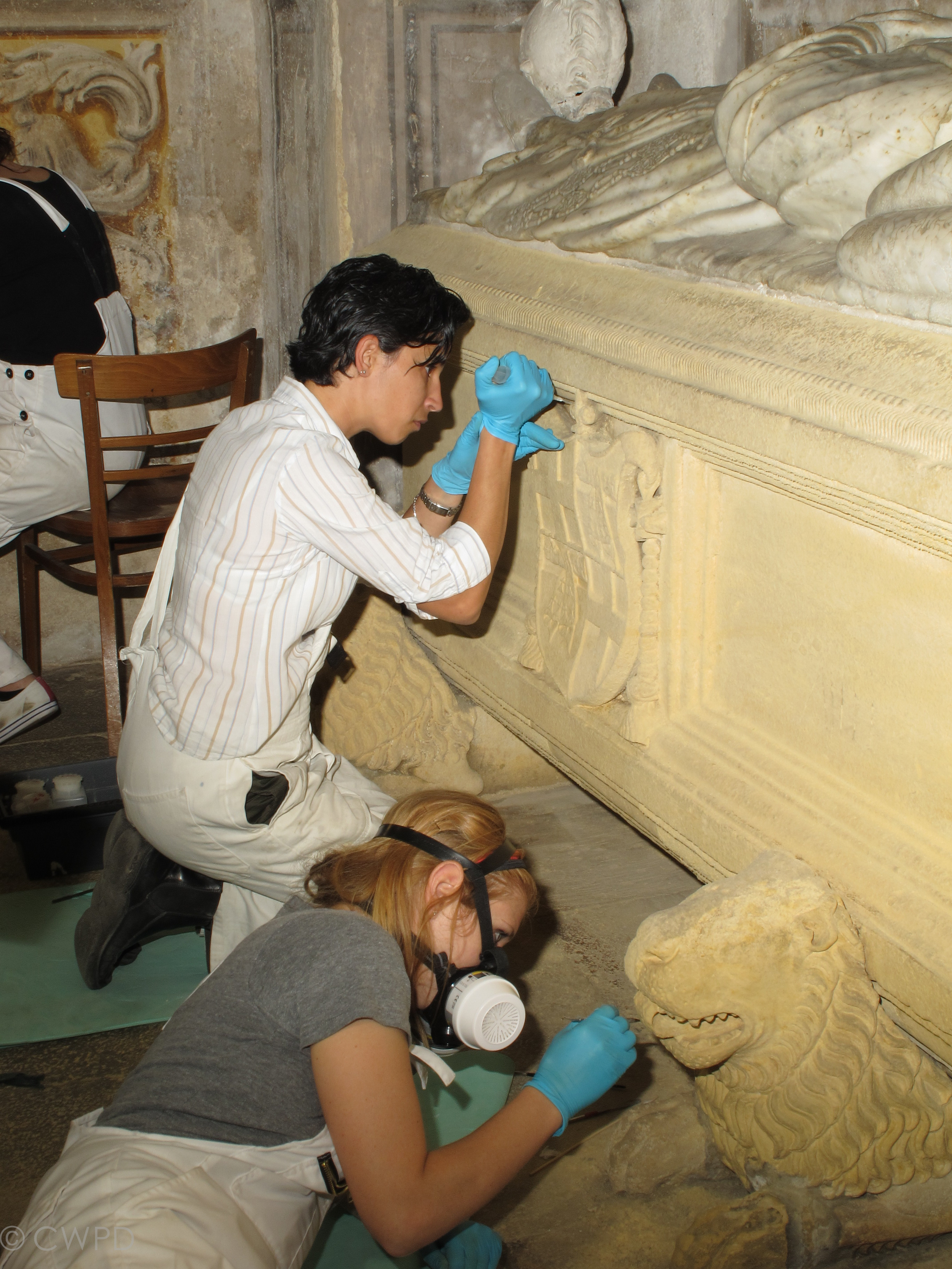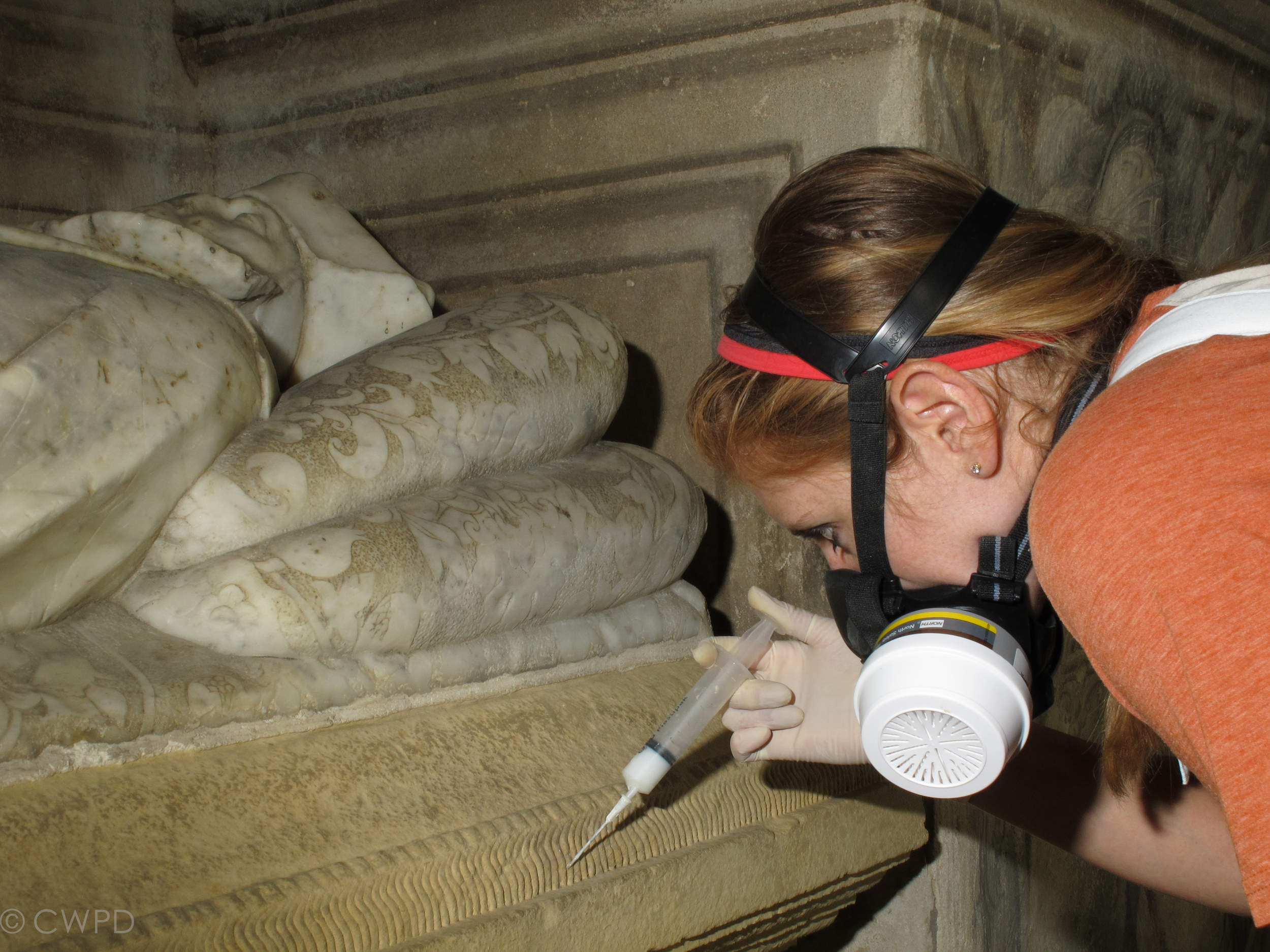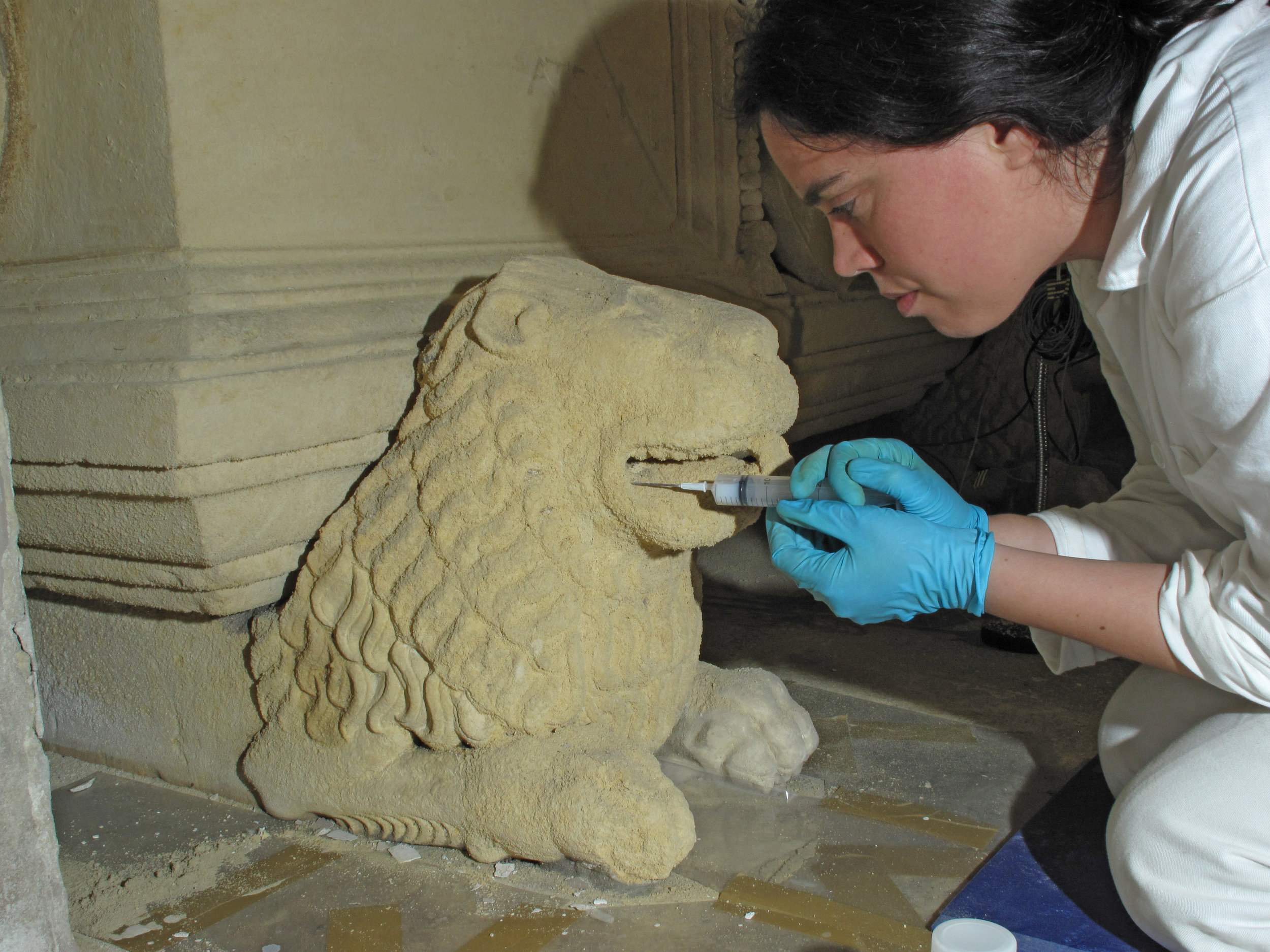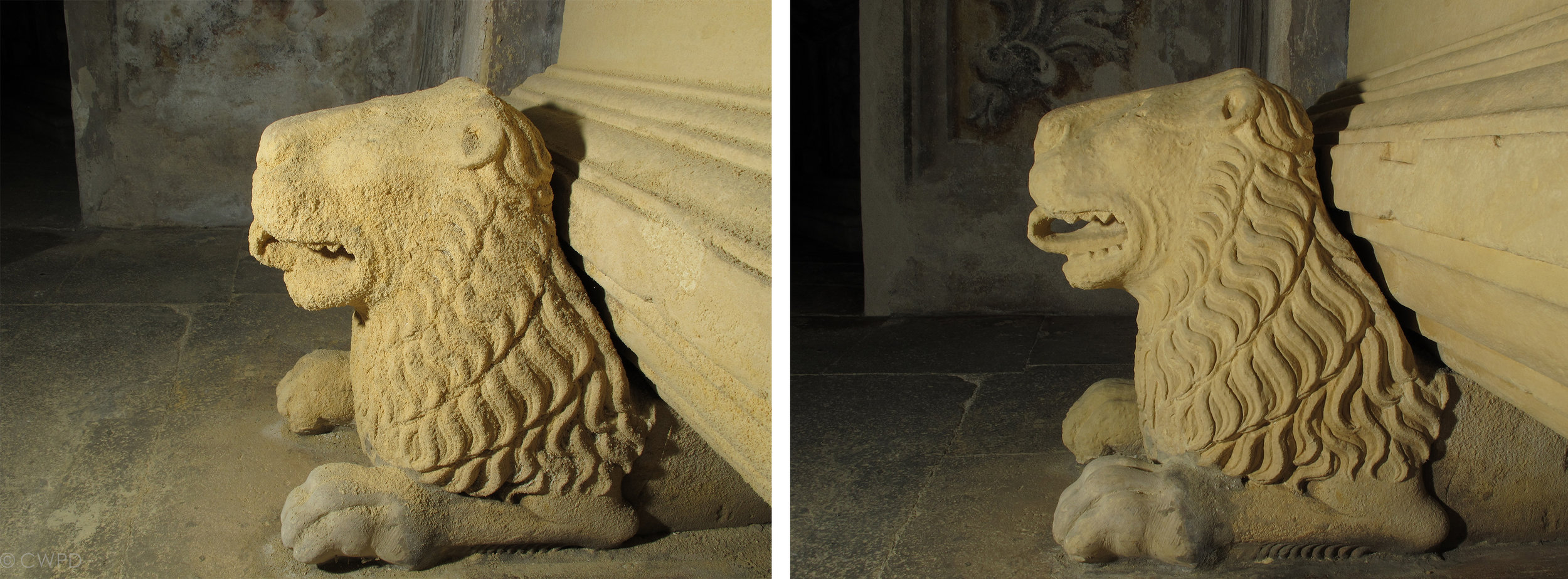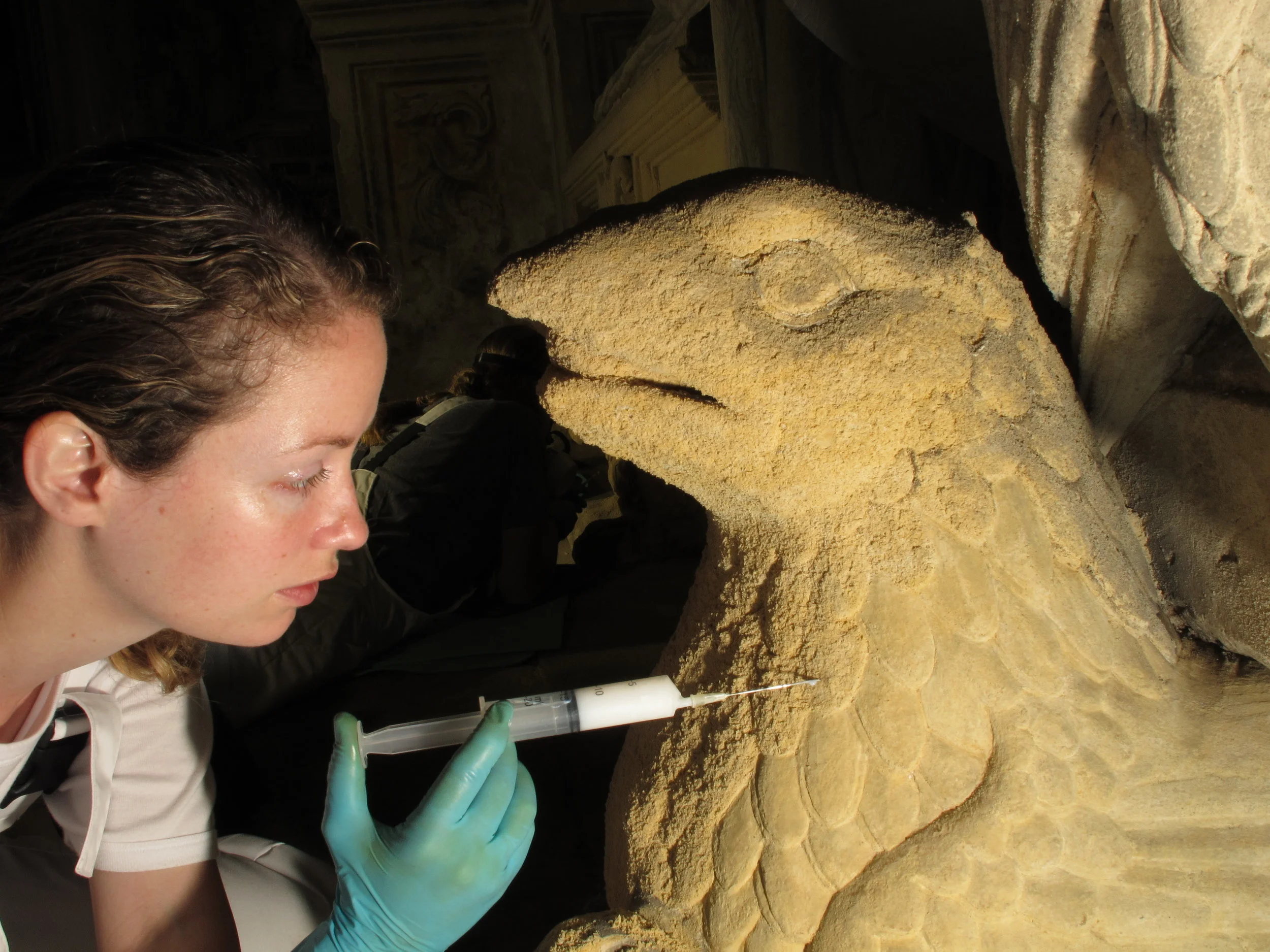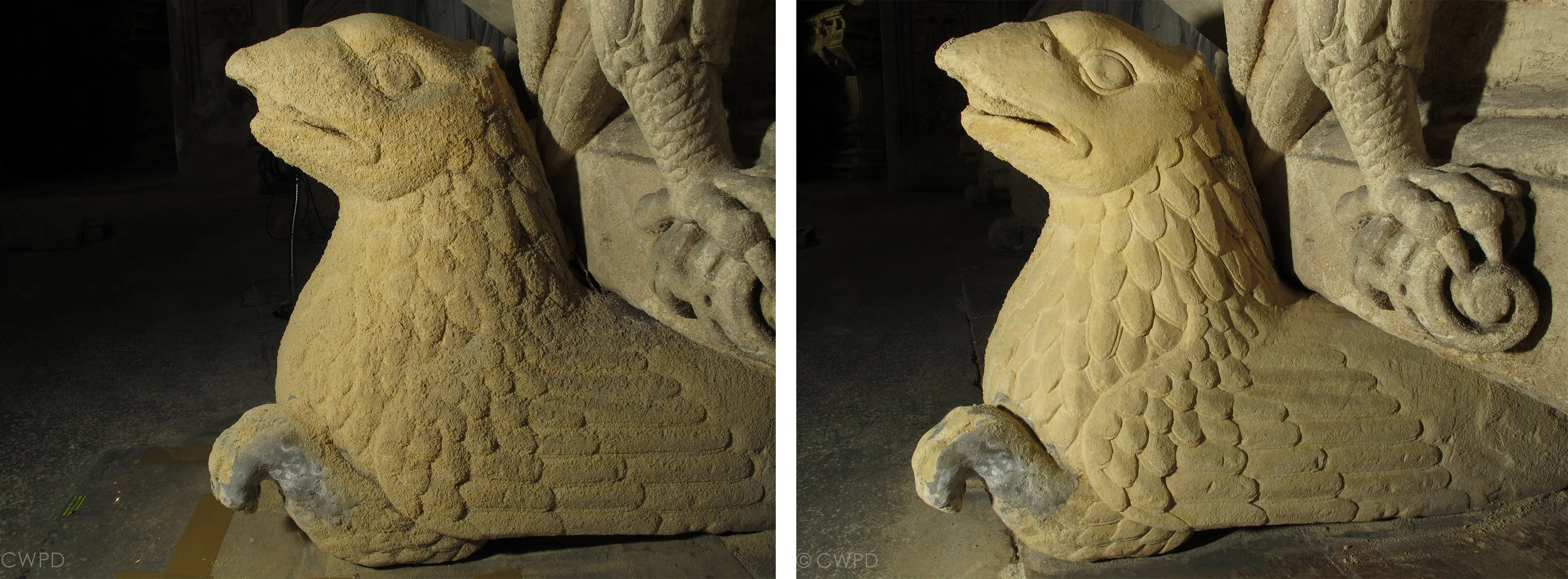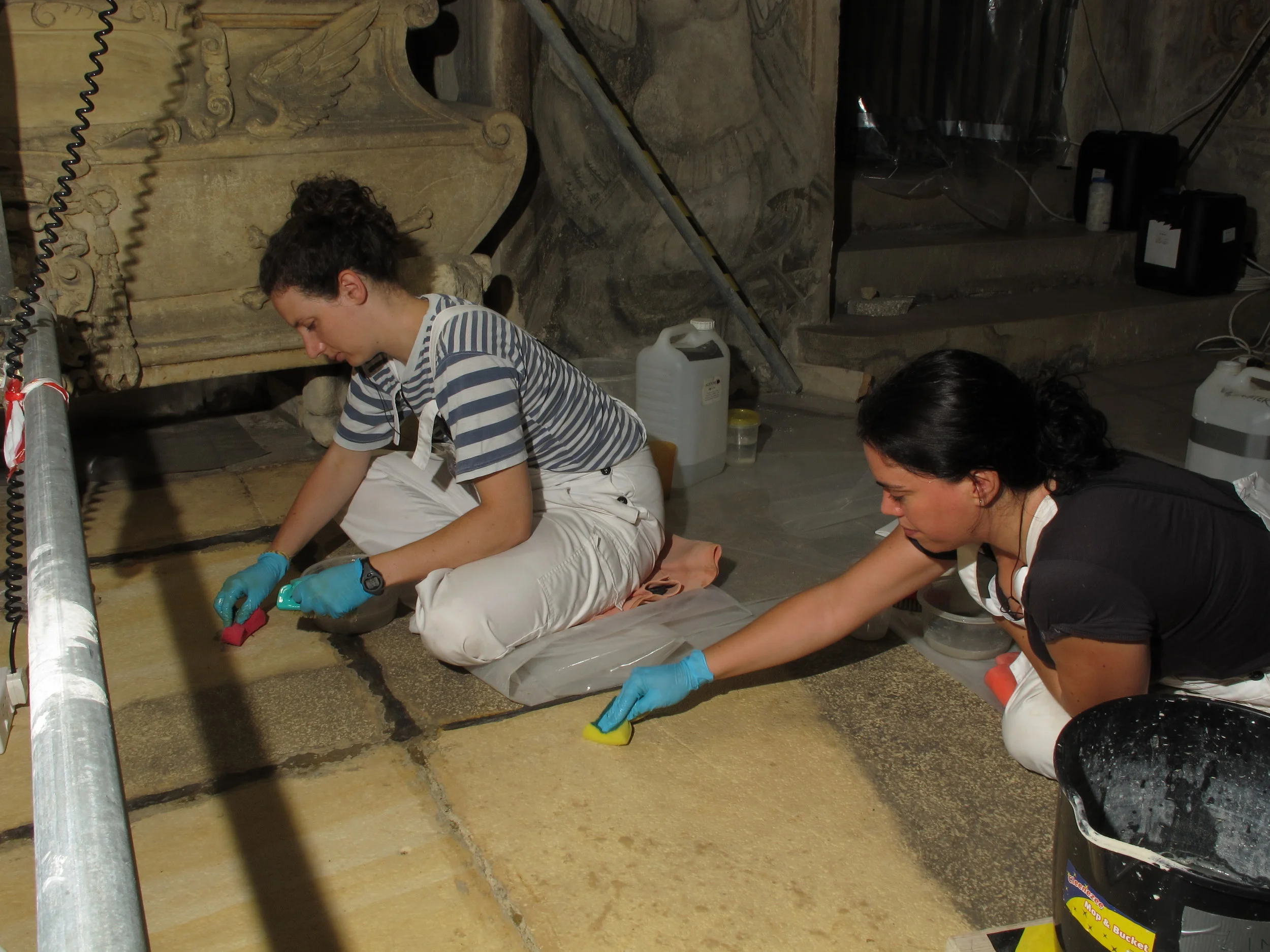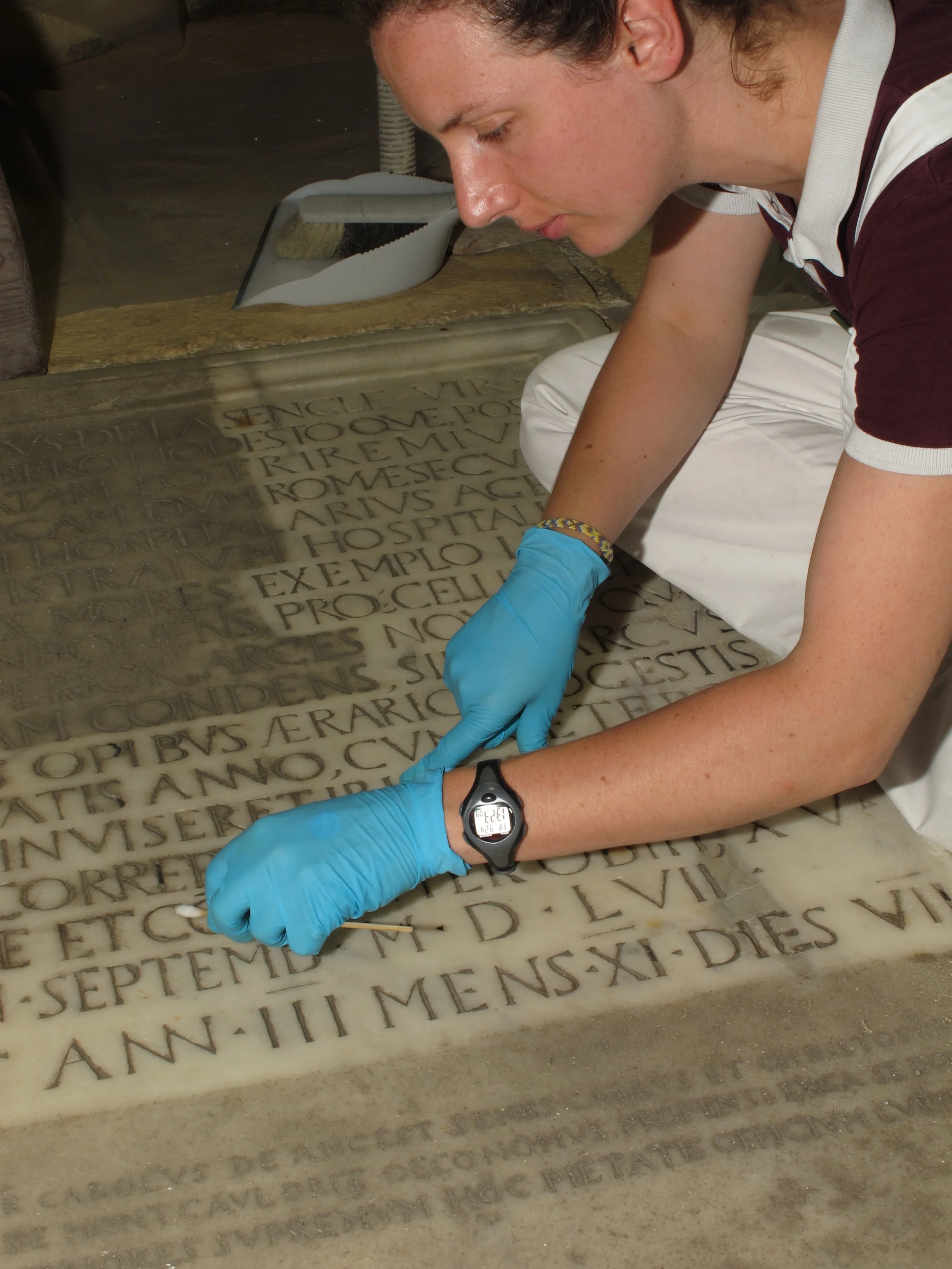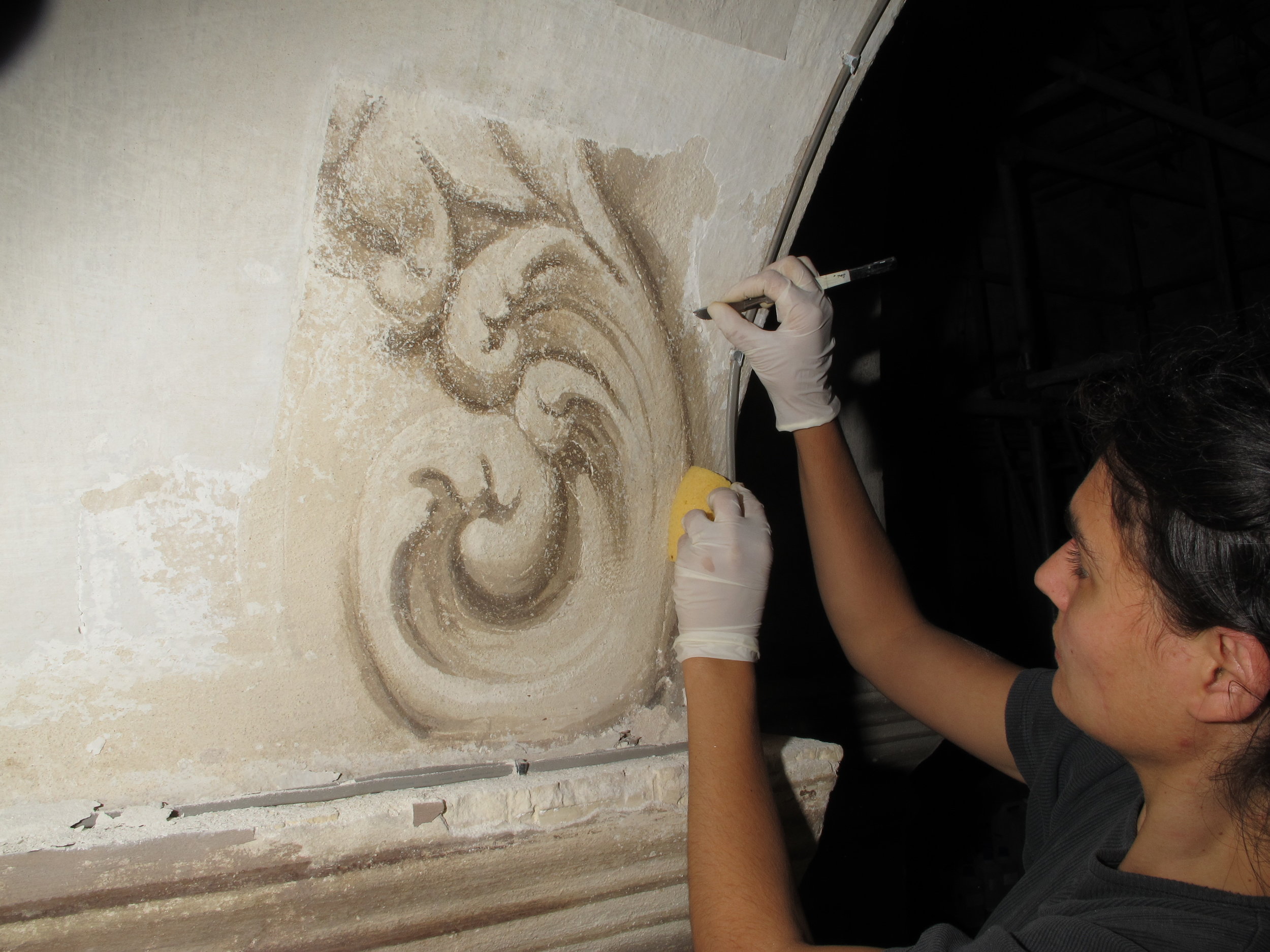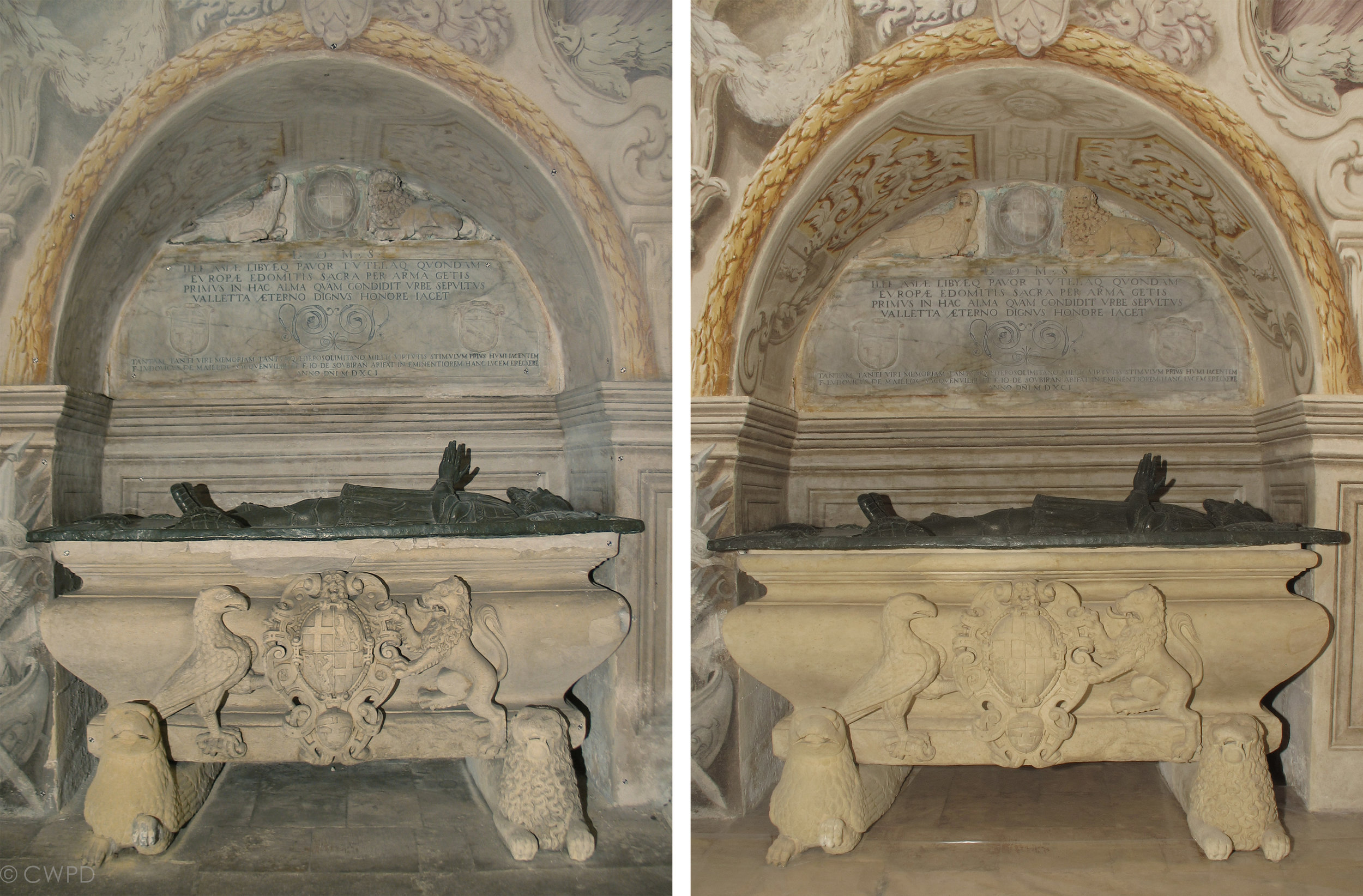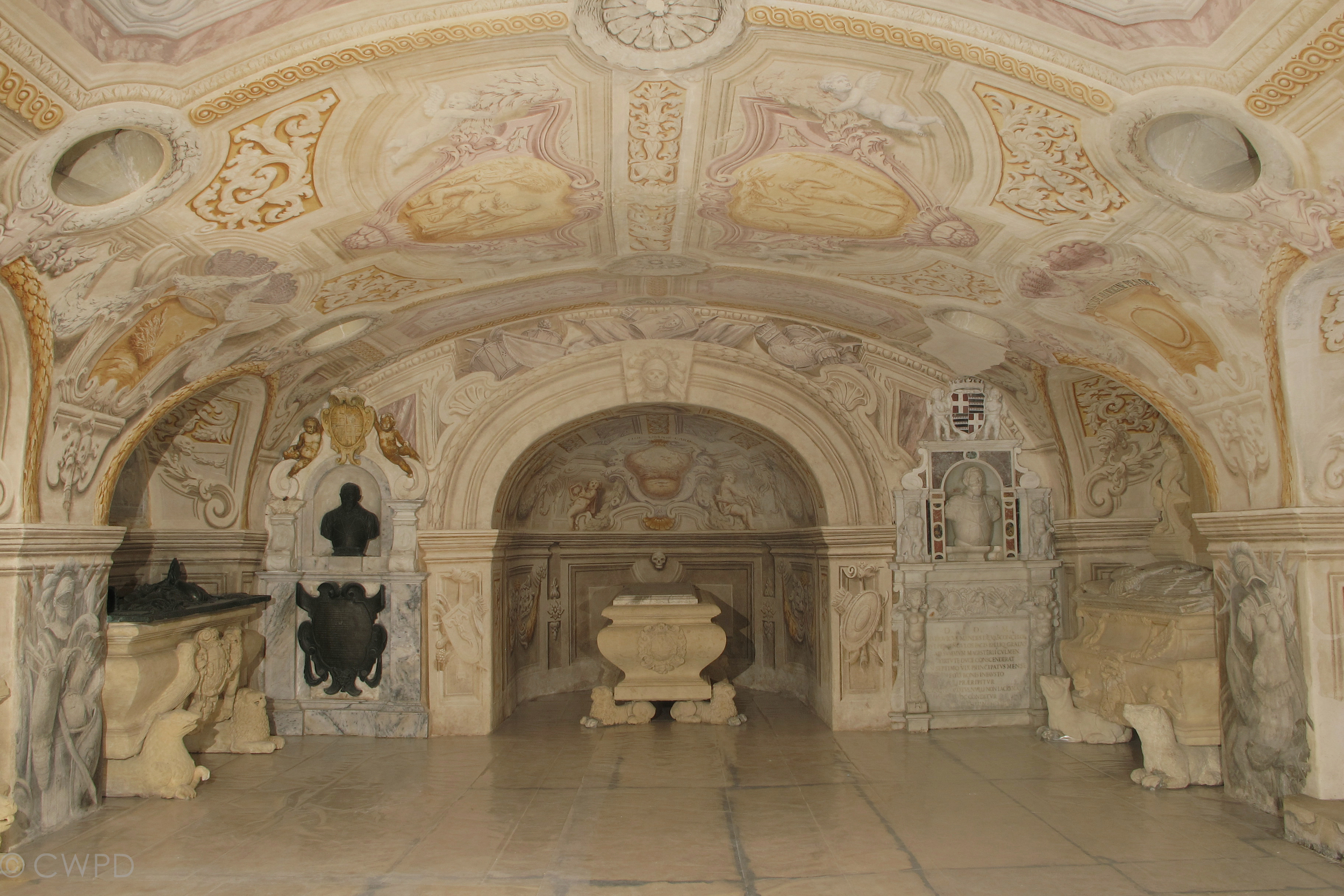The Crypt of St. John's Co-Cathedral
The Grand Masters' Crypt is a subterranean room, located beneath the choir of St John’s Co-Cathedral in Valletta, Malta. It is a vaulted space, constructed of ashlar masonry, cut from the local globigerina limestone. A painted scheme, executed in buon fresco on a lime and sand plaster, extends over a majority of the surface. It is thought to date from the 1720s and is attributed to the Italian painter Niccolò Nasoni. The trompe l’oeil decorative scheme is painted in a muted palette and reflects the mortuary function of the crypt chapel. In addition to the painted scheme, the crypt holds the tomb monuments of twelve Maltese Grand Masters, which include globigerina sarcophagi, inscribed marble floor plaques, and portrait busts.
In 2003 the Courtauld Institute of Art was invited by the St John’s Co-Cathedral Foundation to undertake a preliminary investigation and advise on conservation measures. Large areas of the wall paintings were found to be detaching and at risk of collapse. Salt-related deterioration was causing powdering and loss from both the limestone tomb monuments and wall paintings. Furthermore, salt efflorescence, biofilms and dirt were hindering appreciation of the paintings and diminishing recognition of the Crypt’s significance. Investigations revealed the fluctuating microclimate as a key cause of the ongoing deterioration. Measures to stabilize the environment were implemented in 2009 before remedial treatments began, and included sealing the crypt to prevent air exchange and the installation of an environment control system.
Remedial conservation treatment was led by Sibylla Tringham and Charlotte Martin de Fonjaudran, working with a small team of conservators. Treatment included injection grouting to stabilize widespread detachment of the painted plaster; consolidation of the wall paintings and limestone tomb monuments; repairs to losses in the plaster and stone; cleaning and removal of salt efflorescence, loose dirt, and microbiological growth from the wall paintings, tomb monuments, and stone floor; and uncovering of a section of wall painting obscured by layers of limewash. Conservation treatment was completed in 2013.

